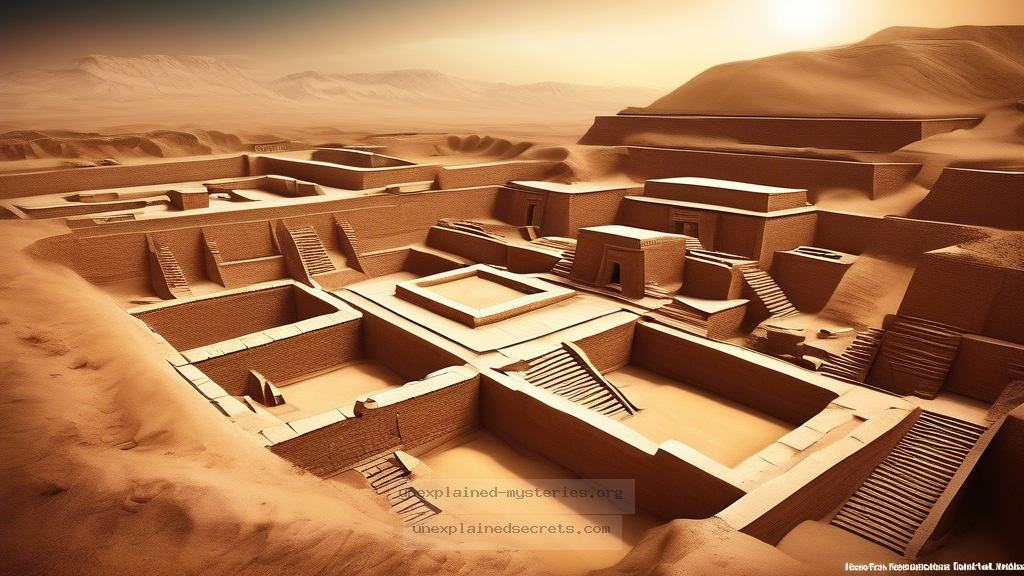What Happened to the Advanced Civilizations of the Indus Valley?
What Happened to the Advanced Civilizations of the Indus Valley?
The mystery surrounding the Indus Valley Civilization (IVC), one of the world’s earliest urban cultures, has intrigued historians, archaeologists, and enthusiasts of ancient mysteries for generations. This civilization, which thrived from approximately 3300 BCE to 1300 BCE in what is now Pakistan and northwest India, was remarkable for its advanced city planning, sophisticated drainage systems, and impressive architecture. Yet, despite these achievements, it mysteriously declined and eventually vanished, leaving behind a wealth of unanswered questions. Understanding this enigmatic civilization offers profound insights into the rise and fall of urban societies and the lessons they can impart on our contemporary world.
Historical Context of the Indus Valley Civilization
The Indus Valley Civilization, also known as the Harappan Civilization, was one of the three early cradles of civilization, alongside Mesopotamia and Ancient Egypt. It was characterized by large urban centers, such as Harappa and Mohenjo-Daro, which featured well-planned streets, advanced drainage systems, and standardized baked brick construction. With an estimated population of over five million at its peak, the IVC was an economic powerhouse, engaging in trade with neighboring regions, including Mesopotamia.
One of the most striking aspects of the IVC was its writing system, which remains undeciphered. This lack of understanding contributes to the mystery surrounding the civilization. Archaeological findings suggest that the society was highly organized, with a centralized authority or at least a shared cultural framework that unified its diverse population.
Core Concepts: Theories of Decline
Various theories have been proposed to explain the decline of the Indus Valley Civilization, ranging from environmental changes to sociopolitical factors. These theories can be broadly categorized into several key areas:
- Climate Change: Evidence suggests that the region underwent significant climatic shifts, leading to reduced rainfall and drought conditions that could have devastated agricultural practices.
- River Dynamics: The shifting courses of the Indus River and its tributaries may have led to flooding or loss of irrigation opportunities, contributing to food shortages.
- Invasion or Conflict: Some historians argue that invasions by Indo-Aryan tribes or internal conflict could have led to the civilization’s collapse.
- Sociopolitical Factors: Changes in trade routes or the emergence of new power dynamics within the region might have disrupted the established order.
Practical Implications: Evidence from Archaeological Findings
Archaeological excavations at sites like Mohenjo-Daro and Harappa have uncovered artifacts that provide valuable insights into the daily life and practices of the IVC. Items such as seals, pottery, and tools reveal a complex society engaged in trade, agriculture, and craft production. The discovery of large granaries suggests that the civilization was capable of storing surplus food, which is indicative of a sophisticated agricultural system.
Additionally, the presence of urban planning and infrastructure, including drainage systems that were advanced for their time, points to an organized approach to city management. However, the lack of temples or monumental religious buildings raises questions about the role of religion in their daily lives, suggesting that their societal structure may have been different from other ancient civilizations.
Alternative Perspectives: Debates Among Scholars
While some scholars emphasize environmental factors as the primary cause of the IVC’s decline, others argue for a more nuanced understanding that incorporates multiple elements. For instance, the debate over whether external invasions were responsible for the collapse continues to be contentious. Some archaeologists assert that there is insufficient evidence to support the invasion theory, suggesting that the civilization may have been able to adapt to changing circumstances rather than facing outright destruction.
Common Misconceptions and Clarifications
Many misconceptions persist regarding the Indus Valley Civilization. One prevalent myth is that the IVC was a homogeneous society; in reality, it was diverse, with various cultures and communities coexisting. Additionally, while it is often assumed that the civilization vanished entirely, evidence suggests that its people may have migrated to other regions or assimilated into surrounding cultures.
Another misunderstanding is the belief that the IVC lacked a written language. In fact, their script, although undeciphered, indicates that they likely had a complex form of communication. The inability to read their script hampers our understanding but does not negate the possibility of sophisticated thought and governance.
Best Practices for Investigation and Study
For scholars and enthusiasts interested in studying the Indus Valley Civilization, several best practices can enhance research efforts:
- Interdisciplinary Approach: Combine archaeology, anthropology, and environmental science to gain a holistic understanding of the civilization.
- Fieldwork and Excavation: Participate in archaeological digs to obtain firsthand experience and contribute to ongoing research.
- Engagement with Local Cultures: Understanding the modern cultures in the region can provide insights into the historical context of the IVC.
- Collaboration: Work with international scholars to share findings and develop a broader understanding of the civilization.
Future Developments: Ongoing Research and Discoveries
Research on the Indus Valley Civilization is ongoing, with new discoveries continually reshaping our understanding. Recent technological advancements, such as satellite imagery and ground-penetrating radar, have opened new avenues for exploration. These tools are enabling archaeologists to identify potential sites for excavation that may have been overlooked in previous years.
Additionally, studies examining ancient DNA and isotopic analysis of human remains are helping researchers understand migration patterns, diet, and health conditions of the people who lived in this ancient civilization. As new findings emerge, they will undoubtedly contribute to a more nuanced understanding of the IVC’s complexities and its eventual decline.
Conclusion: Lessons from the Indus Valley Civilization
The story of the Indus Valley Civilization serves as a poignant reminder of the fragility of human achievements. Despite its remarkable advancements, the civilization ultimately faced challenges that led to its decline, providing timeless lessons about resilience, adaptation, and the consequences of environmental and social changes. As we continue to explore the remnants of this ancient society, we not only seek to uncover the mysteries of the past but also aim to glean insights that can inform our future.
In summary, the decline of the Indus Valley Civilization is a multifaceted mystery, driven by a combination of environmental, social, and economic factors. As ongoing research sheds light on this ancient culture, it offers a window into the complexities of human civilization and the lessons that can be learned from its rise and fall.
Other Articles
Recent Posts
- What Happened to Flight MH370? The Conspiracy Theories That Still Haunt Us
- What Secrets Lurk Within the Walls of the Infamous Trans-Allegheny Lunatic Asylum?
- What Evidence Supports the Existence of Bigfoot in the Pacific Northwest?
- What Happened to the Indus Valley Civilization? Unraveling the Mysteries of Ancient Urban Life
- Can Telepathy Be Scientifically Proven Through Laboratory Evidence?







